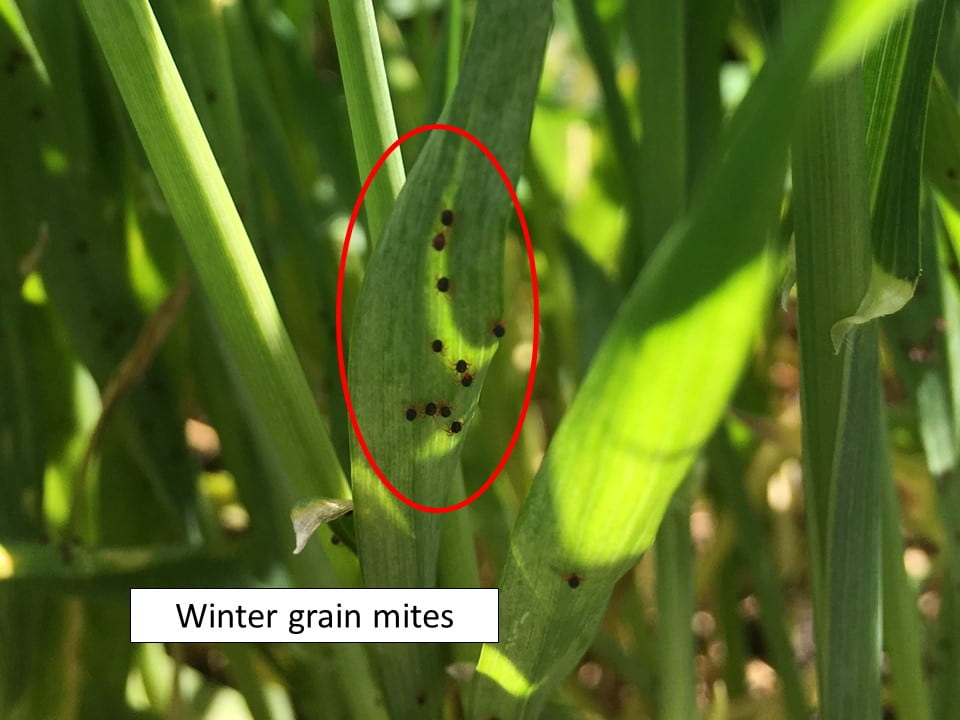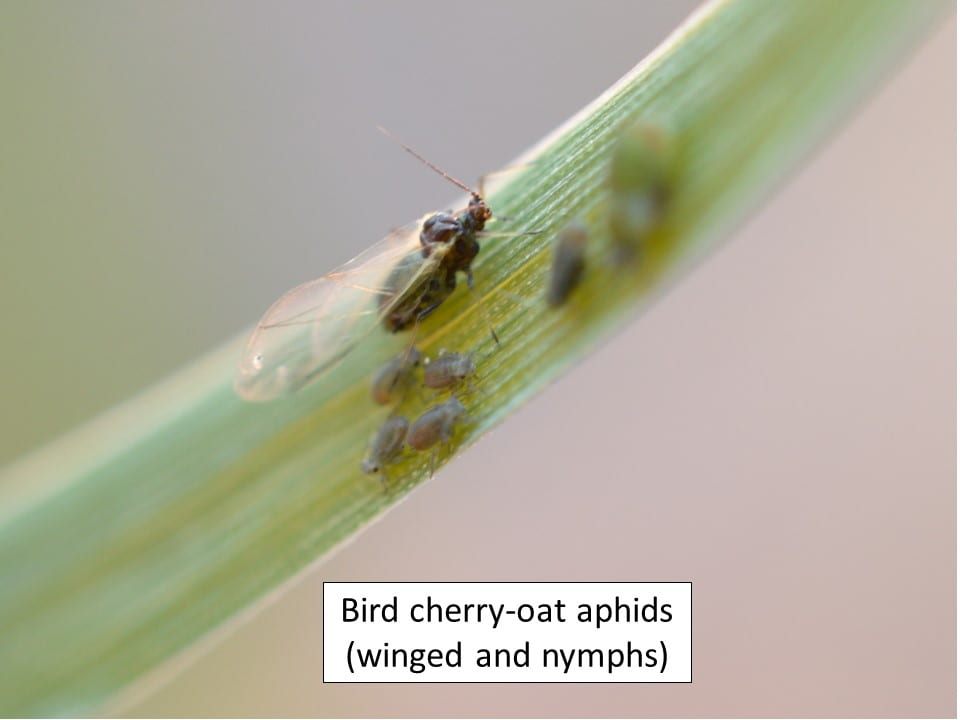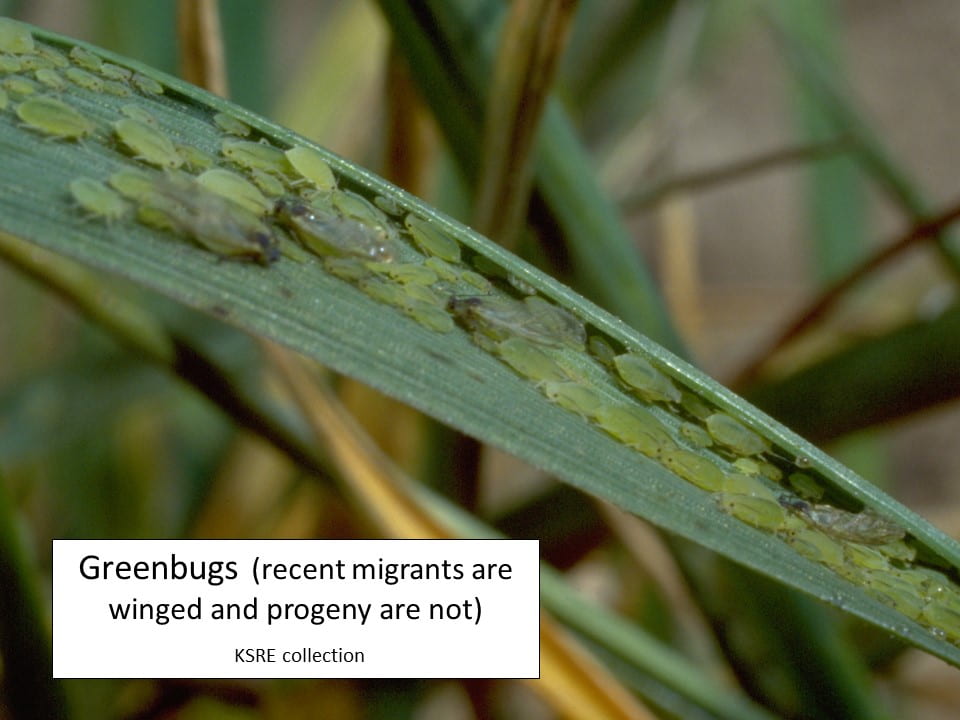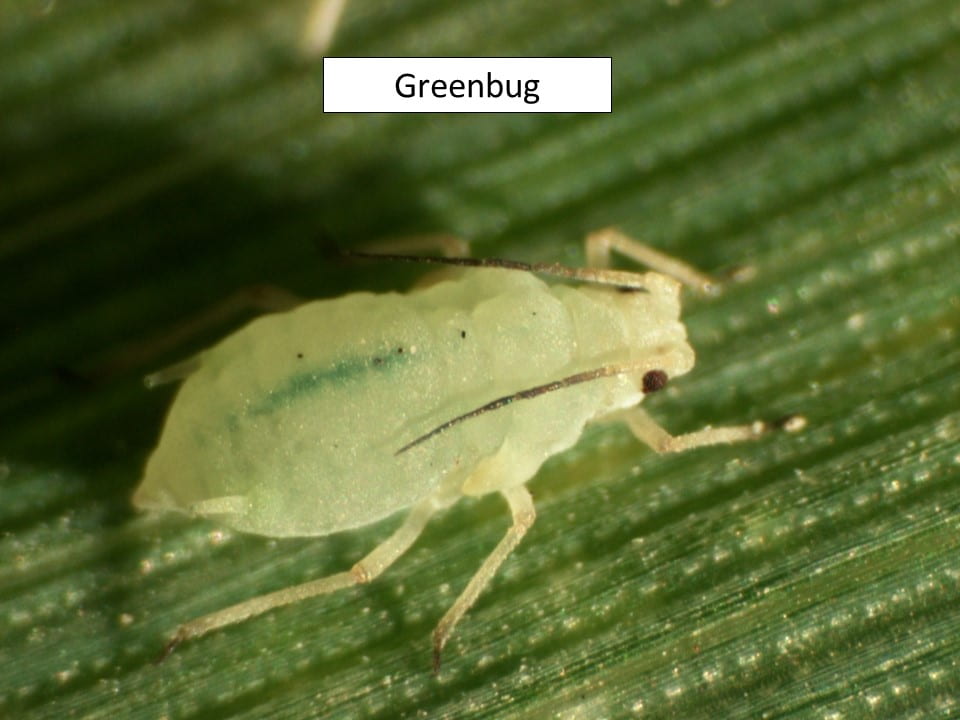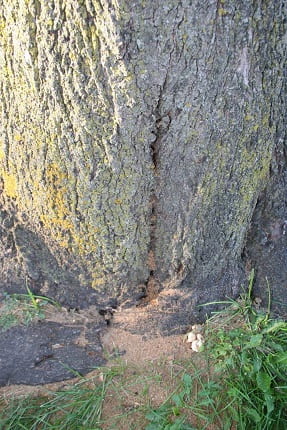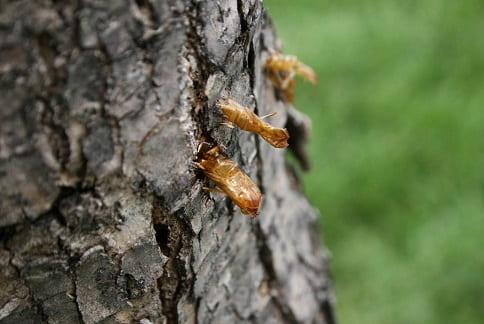–by Dr. Jeff Whitworth and Dr. Holly Davis
Most wheat fields we sampled around north central Kansas between 2-6 May had populations of bird cherry-oat aphids which were relatively easy to find. They were in 100% of the sampled areas, however, not on 100% of the plants within those areas. They are relatively easy to see, because of their dark color, if you examine the lower portion of the plants. There are no symptoms or signs of their feeding nor would we expect there to be any because of the good growing conditions so far. The populations are not yet at the density to warrant any concern.
Some winter grain mites were also noted but are nothing to worry about. Winter grain mites are usually in their summer aestivation, or dormancy, period by now as they prefer cool, cloudy weather. Thus, they will not be a problem moving forward into this growing season but the fact that there are still a few around is indicative of the cloudy, cool conditions we have experienced thus far this spring.
It is still NOT recommended to add an insecticide to a fungicide application just to save application costs and to kill the few aphids that are present. This will do much more harm than good in the long run. For more information relative to wheat pest and their management, please see the Wheat Insect Management Guide available here: https://www.bookstore.ksre.ksu.edu/pubs/mf745.pdf

